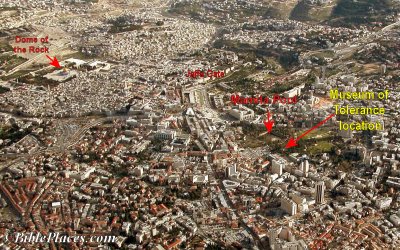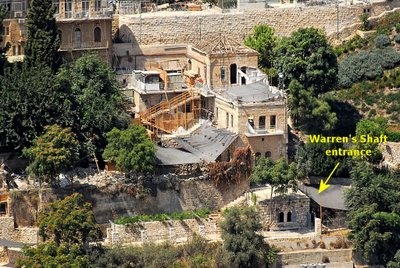Archaeologists have recently uncovered a large cemetery where the Jerusalem model of the Holyland Hotel once sat. Hundreds of thousands of tourists have flocked to the site, never knowing that they were standing on top of a remarkably well-preserved Intermediate Bronze cemetery.

For forty years, the Holyland Hotel model was a highlight of many tourists’ visits to Jerusalem. But then the owners decided they could make more money if the land was developed into high-rise apartment buildings. Construction began while an alternate location for the model was sought.

Earlier this year the model was transported from its original location to the Israel Museum where it is now on display to the public. What no one knew is that the model site was a cemetery during the Intermediate Bronze Age.
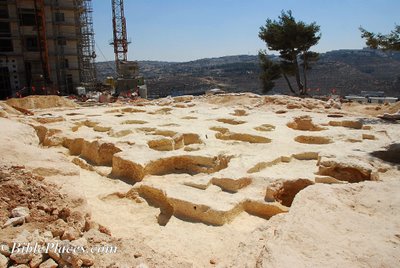 About 20 shaft graves have been excavated so far, but it is estimated that there are 50 tombs in the area.
About 20 shaft graves have been excavated so far, but it is estimated that there are 50 tombs in the area.
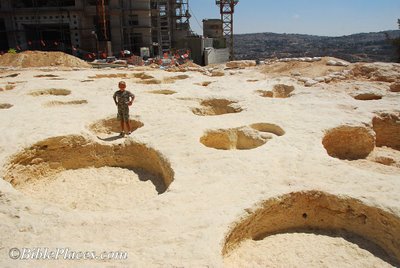 Shaft graves are the most common type of tomb from the Intermediate Bronze Age. This period dates from approximately 2300-2000 B.C., and has also been known as Early Bronze IV and Middle Bronze I.
Shaft graves are the most common type of tomb from the Intermediate Bronze Age. This period dates from approximately 2300-2000 B.C., and has also been known as Early Bronze IV and Middle Bronze I.
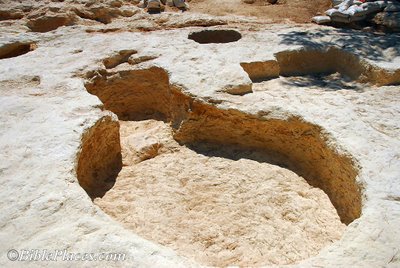 A shaft grave consists of two sections: a shaft and a burial chamber. The photo above shows a tomb with most of the top missing, but gives a good top-plan of the tomb. The shaft is in the back and the burial chamber is in the foreground.
A shaft grave consists of two sections: a shaft and a burial chamber. The photo above shows a tomb with most of the top missing, but gives a good top-plan of the tomb. The shaft is in the back and the burial chamber is in the foreground.
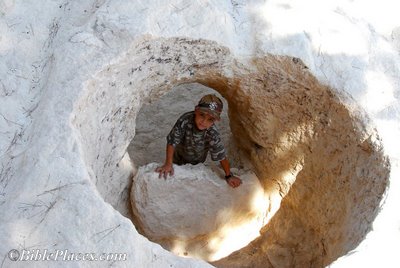 More of this tomb is preserved, including about 5 feet (1.6 m) of depth of the shaft. Typically the shafts are about 6 feet (2 m) deep. The burial chamber was sealed off from the shaft by a blocking stone, which is visible below the boy’s hands.
More of this tomb is preserved, including about 5 feet (1.6 m) of depth of the shaft. Typically the shafts are about 6 feet (2 m) deep. The burial chamber was sealed off from the shaft by a blocking stone, which is visible below the boy’s hands.
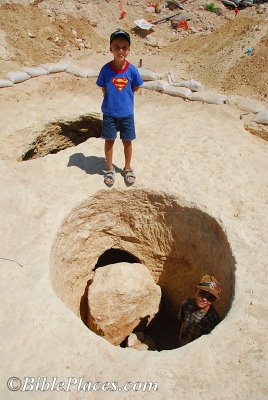 In this tomb, a larger blocking stone has been preserved in the shaft. Visible behind Superman is an opening to the burial chamber.
In this tomb, a larger blocking stone has been preserved in the shaft. Visible behind Superman is an opening to the burial chamber.
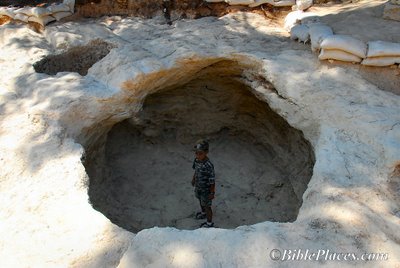 This burial chamber was preserved to a greater height, but the large hole in the ceiling gives a good view. Other burial chambers are preserved intact, but dark caves don’t look as interesting in a photograph.
This burial chamber was preserved to a greater height, but the large hole in the ceiling gives a good view. Other burial chambers are preserved intact, but dark caves don’t look as interesting in a photograph.
Finds from the tombs indicate that they continued in use into the Middle Bronze period (2000-1550 B.C.). The Mount of Olives is also home to a cemetery from this period, but less is known about it because later cemeteries were built over it (in the Second Temple and modern periods). This cemetery is located 3 miles (4.8 km) west of the Temple Mount (here’s the kmz file for those with Google Earth).
As far as we know, this discovery has not yet been reported in the media.
